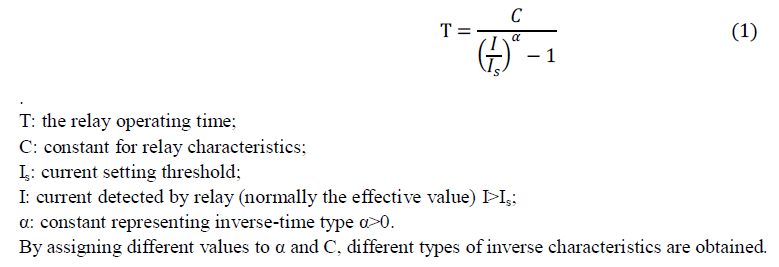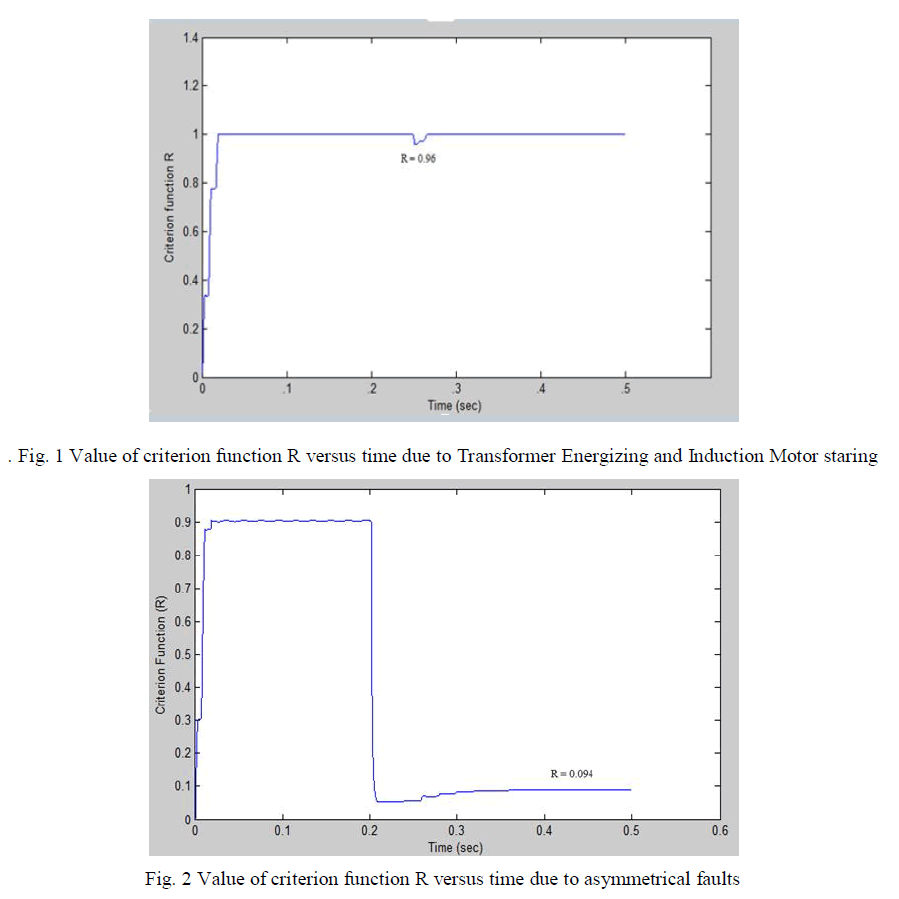ISSN ONLINE(2278-8875) PRINT (2320-3765)
ISSN ONLINE(2278-8875) PRINT (2320-3765)
Mrs. Kawita D. Thakur1, Dr. V. N. Gohokar2
|
| Related article at Pubmed, Scholar Google |
Visit for more related articles at International Journal of Advanced Research in Electrical, Electronics and Instrumentation Engineering
Control and reduction of the fault currents in power distribution systems feeding large number of electrified consumers are a significant issue as it can damage all other electrical equipments and threatens supply continuity. The power system maintains its steady state mainly because of the correct and quick remedial action taken by the protective relaying equipment. Often with the settings of protective relaying systems, the relay responds to non fault or switching transients too. The response of the protection system must be automatic, quick, and should cause a minimum amount of disruption to the power system and must have to be inoperative to switching conditions. This paper will explore the method of symmetrical components for discrimination between faults and switching events in distribution system overcurrent protection
Keywords |
| Faults, Overcurrent protection, Switching events, Symmetrical components. |
INTRODUCTION |
| Over currents is one the most significant problems in the power distribution system. An accurate knowledge of the fault performance of a power system is necessary for determining component ratings, coordinating protective settings, limiting component damage and plant down-time and even fulfilling regulatory obligations. It is essential that accurate fault studies be completed whenever network configuration is modified. The fault analysis of a power system is required in order to provide information for the selection of switchgear, setting of relays and stability of system operation. A power system is not static but changes during operation (switching on or off of generators and transmission lines) and during planning (addition of generators and transmission lines).Thus fault studies need to be routinely performed by utility engineers. Faults usually occur in a power system due to insulation failure, flashover, physical damage or human error. These faults may either be three phases in nature involving all three phases in a symmetrical manner, or may be asymmetrical where usually only one or two phases may be involved. The most common types of fault are single-line-toground fault, line-to-line fault, and double-line-to-ground fault. All of these are unbalanced faults. The balanced (or three phase) fault is the one when all three lines are shorted to ground. It is usually rare, but can happen. When a fault occurs it is important to isolate it by opening protective breakers. To properly set the breakers, the magnitude of the fault currents needs to be known. Faults may also be caused by either short-circuits to earth or between live conductors, or may be caused by broken conductors in one or more phases. Sometimes simultaneous faults may occur involving both shortcircuit and broken conductor faults (also known as open-circuit faults). Balanced three phase faults may be analyzed using an equivalent single phase circuit. |
| With asymmetrical three phase faults, the use of symmetrical components help to reduce the complexity of the calculations as transmission lines and components are by and large symmetrical, although the fault may be asymmetrical. Fault analysis is usually carried out in per-unit quantities (similar to percentage quantities) as they give solutions which are somewhat consistent over different voltage and power ratings, and operate on values of the order of unity [1], [2]. This paper proposed a criterion function based on symmetrical components for discrimination between faults and switching conditions that may be used in simulation models ensuring reliable operation of protective systems. |
II.LITERATURE SURVEY |
| A symmetrical component is the name given to a methodology, which was discovered in 1918 by Charles Legeyt Fortescue who later presented a paper on his findings entitled, “Method of Symmetrical Co-ordinates Applied to the Solution of Polyphase Networks.” Fortescue demonstrated that any set of unbalanced three-phase quantities could be expressed as the sum of three symmetrical sets of balanced phasors [3]. |
| An unbalanced system of n phasors can be resolved into n systems of balanced phasors. These subsystems of balanced phasors are called symmetrical components. With reference to 3-phase systems the following balanced set of three components are identified and defined. |
| 1. Set of three phasors equal in magnitude, displaced from each other by 1200 in phase and having the same phase sequence as the original phasors constitute positive sequence components. They are denoted by the suffix 1. |
| 2. Set of three phasors equal in magnitude, displaced from each other by 1200 in phase, and having a phase sequence opposite to that of the original phasors constitute the negative sequence components. They are denoted by the suffix 2. |
| 3. Set of three phasors equal in magnitude and all in phase (with no mutual phase displacement) constitute zero sequence components. They are denoted by the suffix 0. |
| Under a no fault condition, the power system is considered to be essentially a symmetrical system and therefore only positive sequence currents and voltages exist. At the time of a fault, positive, negative and possibly zero sequence currents and voltages exist. Using real time phase voltages and currents along with Fortescue’s formulas, all positive, negative and zero sequence currents can be calculated [4]. |
III.OPERATING PRINCIPLES OF OVERCURRENT RELAYS |
| Normally there are two characteristics for overcurrent relay: 1) definite-time characteristics and 2) inverse-time characteristics. In the definite-time characteristic relays, if the current amplitude exceeds a predefined value, the relay trips after a definite time. In the protection of motors, these relays are used to prevent the unbalanced operation of the motors. According to IEC standard [5], the characteristic of inverse-time overcurrent relays (excluding induction type) is given by the following expression: |
 |
IV. METHODOLOGY |
| For any unbalanced or asymmetrical network, such as asymmetrical fault occurs or having unbalanced load, symmetrical faults the negative component tends to zero. The criterion function for discriminating faults from switching events is defined as follows: |
 |
| Since there is a considerable negative component in the asymmetrical fault case, according to criterion function the value of R is close to zero. In the switching case, the negative component is very small and R is close to value “1” [6]- [9]. |
V. SIMULATION RESULTS AND DISCUSSION |
| To show the advantage of the proposed algorithm, a part of IEEE 13 bus distribution system was modeled using the MATLAB/Simulink. Some switching events are applied to the system along with faults at different times. The simulation results show that how the criterion function help the overcurrent relay to discriminate faults from switching events. Fig. 1 shows the value of criterion function in switching events. Transformer energizing and Induction motor starting are simulated at t = 0.25sec and the value of criterion function in these switching events is “1”. Fig. 2 shows the value of criterion function in case of faults. The asymmetrical faults are simulated at t = 0.2 sec and the value of criterion function in this case is approximately “0”. |
 |
VI.CONCLUSION |
| In this paper, a simple method for discriminating faults from switching events based on symmetrical components has been introduced. The suggested algorithm is based on behaviour of the positive and negative sequence current components during faults and switching conditions. The capability of the method has been demonstrated by simulating various cases on IEEE 13 bus distribution system. Also the criterion function can be applied to the cases of circuit breaker switching/mal-operation, capacitor switching, Induction motor faults, energizing of shunt reactors and shunt capacitors, transformer core residual magnetization, nonlinearity of transformer core. |
References |
|